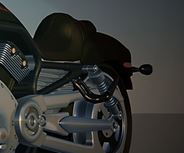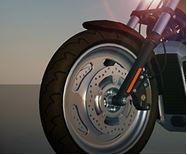Maintaining your bike is one of the most important things you need to do if you own a motorcycle. Apparently, there are those who often dread the idea of taking their buddy to have its MOT done. In a recent survey, about 18 percent of motorbikes fail their MOT, with reasons such as a blown bulb and unacceptable motorcycle tyre fitting.

It is worth noting that passing your bike’s MOT is essential. That is why it is imperative to get motorcycle servicing or motorcycle repairing done before doing so. Of course, you should not see motorcycle maintenance as an important element simply because it helps you pass your MOT. By essence, it keeps your bike healthy and extends its lifespan.
With that being said, it is interesting to know just what exactly you need to look out for. Here is everything you need to know about passing your motorcycle MOT.
When Does Your Motorcycle Need an MOT?
Pretty the same with a car, your motorcycle also needs to have a valid MOT certificate, most especially if it is over three years old. In other words, you have to make sure it gets tested at least once every year to ensure that it is roadworthy and fit to use.
How Much Will Motorcycle MOT Cost You?
When it comes to motorcycle MOT, there are two motorbikes classes. If your bike is deemed Class 1, it means that its engine is up to 200cc. As for Class 2 rides, they are over 200cc. This does not necessarily affect the overall cost of your motorcycle MOT, but if it has a sidecar, then it is a totally different story.
Here is a quick breakdown that you should keep in mind:
- Class 1 – Motorcycle engine with size up to 200cc. Maximum MOT fee is £29.65
- Class 1 – Motorcycle with sidecar and engine size of 200cc. The maximum MOT fee is going to be £37.80.
- Class 2 – Motorcycle with an engine size of over 200cc comes with a maximum MOT fee of £29.65.
- Class 2 – Motorcycle with sidecar and engine size of over 200cc comes with a maximum MOT fee of £37.80.
What You Need to Check before Motorcycle MOT
It is worth noting that your motorcycle MOT will consist of at least 16 checks. These are all designed to ensure that your ride is safe and fit for purpose. Each of these checks is expected to look for excessive wear and tear, damages, and other issues, as well as ensure your bike meets all government standards.
As mentioned above, many motorbike owners tend to fail their MOT simply because they forget to steer clear from mistakes. To help you get an idea, here is a list of some of the most common MOT failures and what you need to do in order to prepare:
Headlamps and Lights

This is where you are going to need a tester that will identify whether your headlamps and lights are still working. Even more so, it will help in understanding their condition to make sure they really fit the correct colours. Obviously, this is something that you can do in advance. Do not also forget to check the aim of your headlamps; otherwise, you will fail your motorbike MOT.
Steering and Suspension

During the check, your bike’s steering and suspension will be reviewed. Their security, condition, and operation will be examined. A tester is expected to go over your bike’s handlebars, shock absorbers, and head bearings, among others. If you start to notice a difference in the handling of your motorbike, do not hesitate to have it check. Do this beforehand!
Wheels and Tyres

The condition of your bike’s wheels will be checked, from its size and type to the tread depth. If your bike is over 50cc, it is important that its tyres’ tread is 1mm across ¾ of the width of the tread pattern. Lastly, the front and rear wheels must have the correct alignment.
The Frame
Your motorbike’s frame will also be checked, so make sure it is free from any corrosion, damage, and distortion. The frame will be scrutinized in order to make sure it will not affect either your bike’s braking or steering.
Brakes – Your bike’s brakes must be operational and in tip-top condition. Your best course of action is to test whether the wheels are able to rotate when the brakes are released and vice versa.







